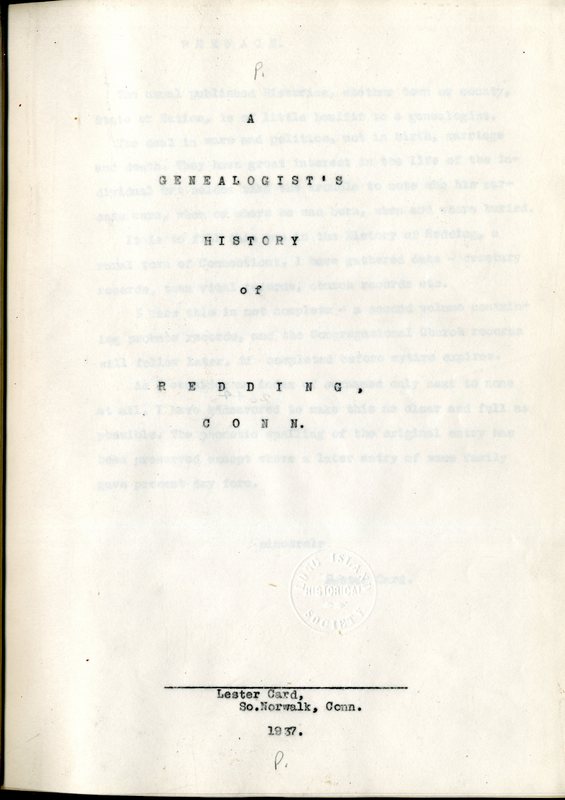From the Preface, "The usual published histories, whether town or county, State or Nation, is of little benefit to a genealogist. They deal in war and politics, not in birth, marriage and death. They have great interest in the life of the individual but seldom take the trouble to note who his parents were, when or where he was born, when and where buried. It is to fill this gap in the History of Redding, a rural town in Connecticut, I have gathered data - cemetery records, town vital record, church records, etc."
At the time colonials began receiving grants for land within the boundaries of present-day Redding, Native American trails crossed through portions of the area, including the Berkshire Path running north-south.
In 1639, Roger Ludlow (also referenced as Roger Ludlowe in many accounts) purchased land from local Native Americans to establish Fairfield and in 1668 Fairfield purchased another tract of land then called Northfield, which comprised land that is now part of Redding.
There are varying accounts as to the first colonial landholder in the Redding area; multiple citations suggest a Fairfield man named Richard Osborn obtained land there in 1671, while differing on how many acres he secured, Nathan Gold, a Fairfield man who would serve as deputy governor of Connecticut from 1708 to 1723, received a land grant for 800 acres in 1681.
During the Revolutionary War, in the winter of 1778-79, General George Washington decided to split the Continental Army into three divisions encircling New York City, where British General Sir Henry Clinton had taken up winter quarters. Major General Israel Putnam chose Redding as the winter encampment quarters for some 3,000 regulars and militia under his command, at the site of the present-day Putnam Memorial State Park and nearby areas. The Redding encampment allowed Putnam's soldiers to guard the replenished supply depot in Danbury, Connecticut and support any operations along Long Island Sound and the Hudson River Valley.Some of the men were veterans of the winter encampment at Valley Forge, Pennsylvania the previous winter. Soldiers at the Redding camp endured supply shortages, cold temperatures and significant snow, with some historians dubbing the encampment "Connecticut's Valley Forge."
http://en.wikipedia.org/wiki/Redding,_Connecticut
Typescript
Includes bibliographical references and index

